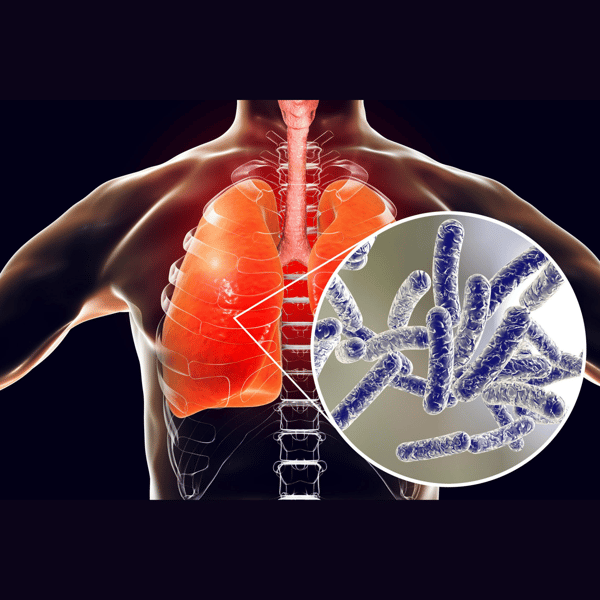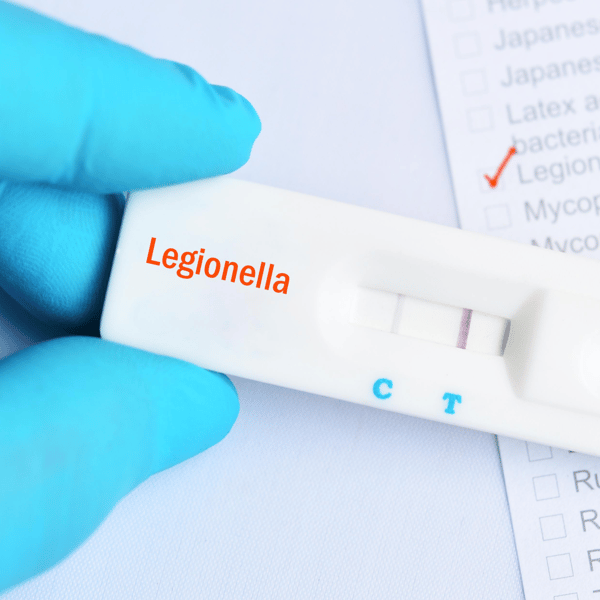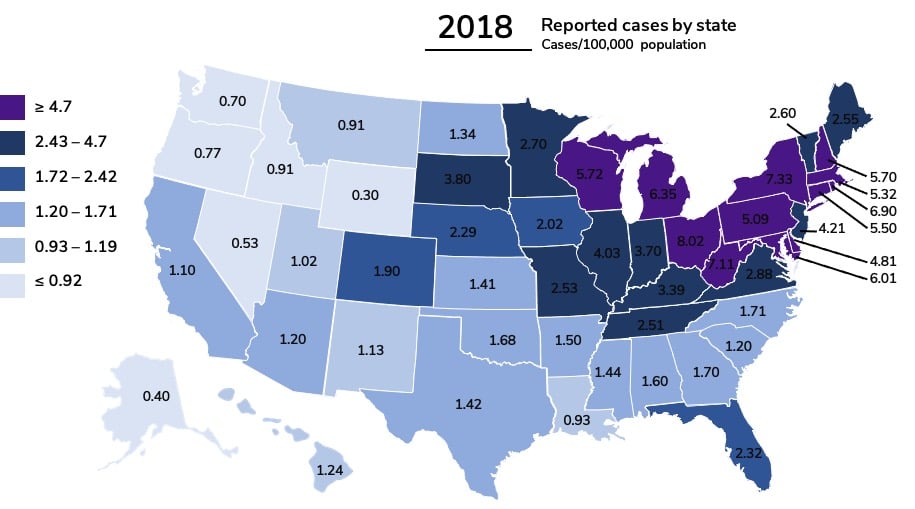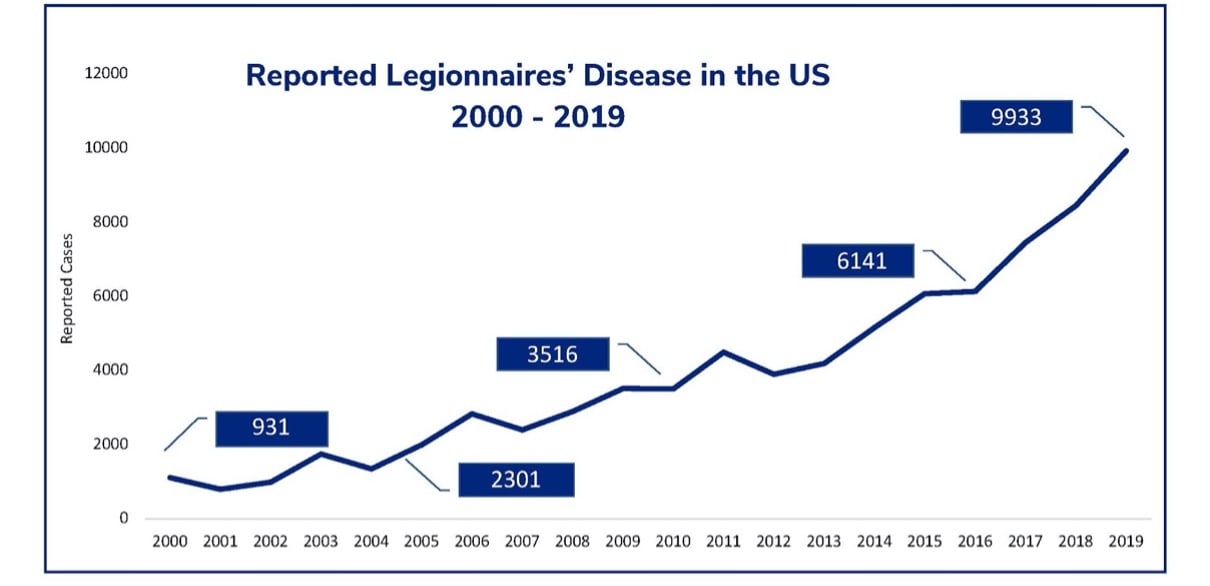The risk of Legionella in the dental practice is a reality. The first confirmed case of...
Legionnaires’ Disease – Legionella 101
What is Legionnaires’ disease?
Legionnaires’ disease – also called Legionellosis and Legionella pneumonia – is a severe type of pneumonia or lung infection. According to the Centers for Disease Control and Prevention (CDC), an estimated 25,000 cases of pneumonia due to the Legionella bacteria (Legionella pneumophila) occur each year, but only a fraction of those cases are reported because of the disease’s nonspecific signs and symptoms, and one in 10 of those will die from the disease.
How do you catch Legionnaires’ disease?
Legionella bacteria are inhaled through microscopic water droplets in the form of mist or vapor. The bacteria, which grow best in warm water, are found primarily in human-made environments. Outbreaks have been linked to a range of sources, such as:
-
cooling towers in air conditioning systems
-
decorative fountains
-
mist machines in grocery stores’ produce sections
-
hot tubs and whirlpools at fitness centers and on cruise ships
-
hot water tanks and heaters
-
large plumbing systems
-
showers and faucets
-
swimming pools
-
equipment used in physical therapy
-
water systems like those used in hotels, hospitals, and nursing homes.
People can also catch Legionnaires’ disease by the aspiration of contaminated drinking water – that is, choking or coughing while drinking can cause water to go down the wrong pipe into the lungs. It’s also possible to contract Legionnaires’ disease from home plumbing systems. Although the great majority of outbreaks have occurred in large buildings, because complex systems allow the bacteria to grow and spread easily.
How is Legionnaires’ disease diagnosed?
The symptoms of Legionnaires’ disease look like other forms of pneumonia or even the flu, which is why so many cases go unreported every year. Early symptoms can include the following:
-
chills
-
fever (potentially 104 degrees or higher)
-
headaches
-
loss of appetite
-
muscle aches
After the first few days of the disease presenting, symptoms can worsen to include:
-
chest pain when breathing (called pleuritic chest pain, due to inflamed lungs)
-
confusion and agitation
-
a cough, which may bring up mucus and/or blood
-
diarrhea (about one-third of all cases result in gastrointestinal problems)
-
nausea and vomiting
-
shortness of breath
The incubation period – the amount of time between breathing in the bacteria and developing symptoms – is usually 2 to 10 days after exposure and can be as much as 16 days. On average, however, the incubation period is 3 to 6 days.
(Note: There is also a mild form of Legionnaires’ disease called Pontiac fever, which can produce symptoms including a fever, chills, headache, and muscle aches. Pontiac fever doesn’t infect the lungs, however, and symptoms usually clear within two to five days.)

What are the complications of Legionnaires’ disease?
After Legionnaires’ disease has been diagnosed, hospitalization is often necessary. In the most severe cases of Legionnaires’ disease, complications can include respiratory failure, kidney failure, septic shock, or even death.
Are you at risk of contracting Legionnaires’ disease?
Anyone can get the disease, but those at the greatest risk of infection include:
-
people 50 years old or older
-
smokers (current or former)
-
heavy drinkers of alcoholic beverages
-
people with chronic lung disease (such as chronic obstructive pulmonary disease or emphysema)
-
people with weakened immune systems (those suffering from diseases such as diabetes, cancer, kidney failure, or infected with HIV)
-
organ-transplant recipients (kidney, heart, etc.)
-
individuals following certain drug protocols (for instance, corticosteroids)
Even relatively healthy individuals have been known to contract the disease, although less typically.

Why is it called Legionnaires’ disease?
In July 1976, more than 4,000 delegates gathered at the Bellevue-Stratford Hotel in Philadelphia for the American Legion Convention. Several days after the conclusion of the four-day event, many attendees took ill. By August 2nd, 22 attendees were dead and hundreds who had attended the gathering were experiencing pneumonia-like symptoms. The final case count reached 221, and 34 of the victims died. It wasn’t until months later that the bacterium was identified and isolated and found to be breeding in the cooling tower of the hotel’s air conditioning system.
How prevalent is Legionnaires’ disease?
Since 2000, the United States has seen an 967 percent spike in the disease, according to the Centers for Disease Control and Prevention (CDC), with a reported 9,933 cases of legionellosis in 2019.


What is the key to preventing Legionnaires’ disease?
The key to preventing Legionnaires’ disease is to make sure that building owners and managers maintain building water systems in order to reduce the risk of Legionella growth and spread. To reduce the risk building owners and managers need to develop a Water Management Program.
What is a Water Management Program?
Water management programs identify hazardous conditions and take steps to minimize the growth and transmission of Legionella and other waterborne pathogens in building water systems. Developing and maintaining a water management program is a multi-step process that requires continuous review. Such programs are now an industry standard for large buildings in the United States.
What are the elements to a Water Management Program?
Seven key elements of a Legionella water management program are to:
-
Establish a water management program team
-
Describe the building water systems using text and flow diagrams
-
Identify areas where Legionella could grow and spread
-
Decide where control measures should be applied and how to monitor them
-
Establish ways to intervene when control limits are not met
-
Make sure the program is running as designed and is effective
-
Document and communicate all the activities
What is routine environmental sampling/ testing for Legionella?
Routine environmental sampling or testing for Legionella is one way to validate the efficacy of a water management program (i.e., to confirm that the water management program is working as intended). The team should base decisions about routine environmental sampling for Legionella on a variety of factors, including the building environmental assessment and water quality data supporting the overall performance of the water management program. Note: The approach to routine sampling in the absence of disease may be different than the approach to environmental sampling/testing in the context of an outbreak.
What are the different type of Legionella tests?
-
Lab culture testing – needs to be performed by a certified and accredited ISO 11731:2017(E) Lab
-
qPCR DNA testing
How can I mitigate my risk as much as possible?
The CDC states that if a facility does everything correct there is still a 10% chance that you will get a case of Legionella. Therefore, correctness, updates, adherence, and documentation of your water management plan will greatly reduce your risk. Our robust water management programs provide all of this for you. Contact IWC Innovations to learn how to mitigate your risk as much as possible.




